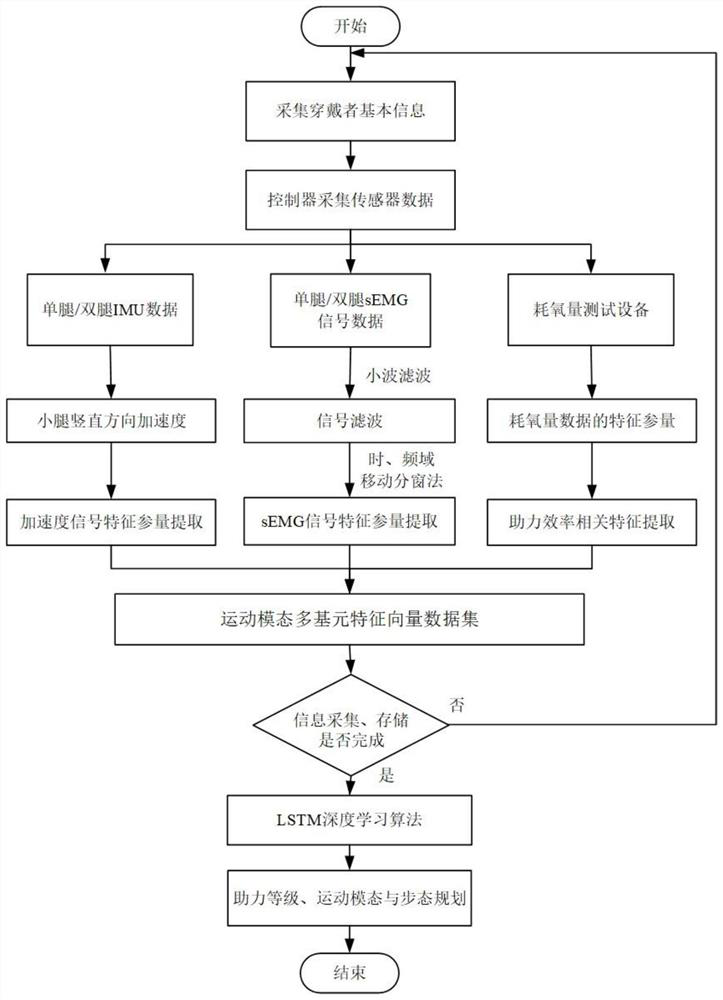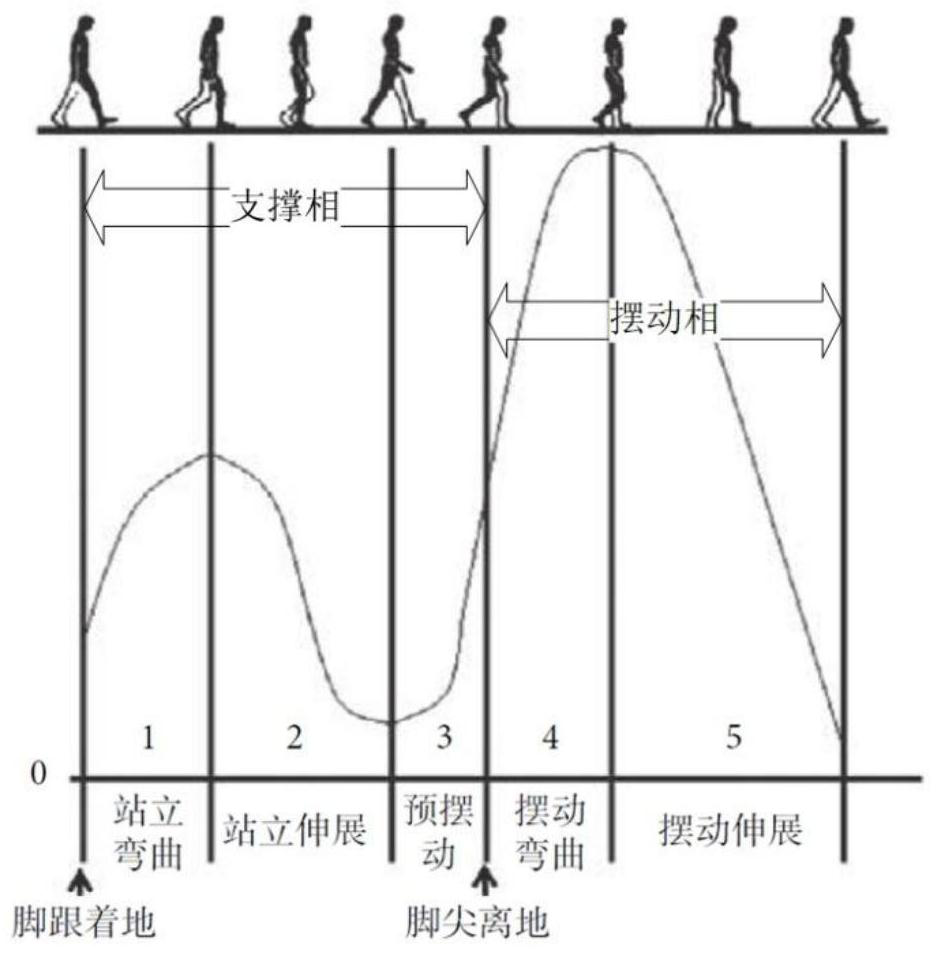Boosted exoskeleton motion intent and pace planning method based on multi-sensing information
A gait planning and exoskeleton technology, which is applied in the fields of equipment to help people walk, medical science, physical therapy, etc., can solve the problems of too simple structure, inability to compensate for errors, one-sided human-computer interaction information, etc., and achieve fast and accurate sharing. , the effect of compensating the time error and improving the solution efficiency
- Summary
- Abstract
- Description
- Claims
- Application Information
AI Technical Summary
Problems solved by technology
Method used
Image
Examples
Embodiment
[0056] The actual test is carried out by adopting a multi-sensing information-based power-assisted exoskeleton motion intention and gait planning method provided by the present invention. In the experiment, the tester walked on the treadmill at a speed of 5km / h and a slope of 10°, collected 4 sets of experimental data, each set was about 1min, and selected 3 sets of data from the 4 sets of data as training data, and the other set As test data, assist level, motion mode and gait planning prediction are performed. Figure 9 In order to select the integrated value and standard deviation of the EMG signal of the rectus femoris muscle, the average frequency and integral value of the EMG signal of the gastrocnemius muscle, and the combined training results of the maximum wavelet coefficient and median frequency eigenvalue of the EMG signal of the tibialis anterior muscle, respectively The comparison of the model's measured and predicted values and the corresponding error values ...
PUM
 Login to View More
Login to View More Abstract
Description
Claims
Application Information
 Login to View More
Login to View More - R&D
- Intellectual Property
- Life Sciences
- Materials
- Tech Scout
- Unparalleled Data Quality
- Higher Quality Content
- 60% Fewer Hallucinations
Browse by: Latest US Patents, China's latest patents, Technical Efficacy Thesaurus, Application Domain, Technology Topic, Popular Technical Reports.
© 2025 PatSnap. All rights reserved.Legal|Privacy policy|Modern Slavery Act Transparency Statement|Sitemap|About US| Contact US: help@patsnap.com



